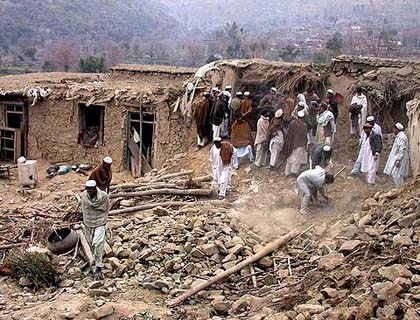Afghan civilians come under the militants’ heavy attacks in recent months. The current violence and bloodshed are reminiscent of the bloody days of war which led to great casualties. The spiral internecine – that raises the death tolls – leaves incurable wound in the hearts of our nation.
Of late, tens of Afghan civilians and police were killed and wounded in terrorist attacks and suicide bombings in restive provinces of Maidan Wardak, Paktika, Balkh, Baghlan, Faryab, Ghazni,Helmand, etc. According to reports, more than 40 Afghan civilians were wounded, many critically, when a bomb ripped through a crowd of worshippers waiting for food to break their Ramadan fast inside a mosque compound in northern Afghanistan last Monday.
The violence comes a day after a suicide attacker killed 33 people in one of the deadliest day for civilians this year, as insurgents ramp up violence across the country.
Last Monday’s bombing in the city of Puli Khumri, capital of Baghlan province came as worshippers had finished their evening prayers in a local mosque and were waiting for food packages, provided by the local government, to break the dawn-till-dusk fast held throughout the holy month of Ramadan.
A provincial police chief Abdul Jabar Purdeli is cited as, “The explosives had been placed inside the mosque compound, and went off as the worshippers and poor people had gathered to receive the food packages.”
On Last Sunday, a suicide car bomber struck near a military base in eastern province of Khost, where Afghan and foreign soldiers are stationed, killing 33 people, most of them civilians. Among those killed were three women and 12 children, points out the statement issued by the UN Assistance Mission in Afghanistan (UNAMA).
In a statement issued from Kabul, the top United Nations official in the country Nicholas Haysom underscored, that an attack deliberately targeting families, colleagues and friends praying together in a mosque “is another horrific example of the conflict in Afghanistan. Such attacks highlight the perpetrators’ intent to destroy lives, and spread terror among the civilian population. The cold statistics of civilian casualties do not adequately capture the horror of the bombs – the torn bodies of children, wives and daughters, sons and fathers….”
With more than 100 civilians injured or killed within two days this week, Mr. Haysom reiterated UNAMA’s repeated calls for the immediate cessation of attacks targeting civilians, stressing “The perpetrators of this war crime must be held accountable.”
Taliban insurgents launched a countrywide offensive in late April, stepping up attacks on government and foreign targets in what is expected to be the bloodiest fighting season in a decade.
Last year was also one of the deadliest on record for civilians in Afghanistan, the UN said in a report with more civilians killed in 2014 than since the agency began compiling figures in 2009. The top UN envoy, Nicholas Haysom said, “In communities across Afghanistan, increased ground fighting among parties to the conflict and more IED attacks exacted a heavy toll on Afghan civilians.”
The report documented 3,699 civilian deaths in 2014, the highest death toll since the UN began keeping systematic record in 2009. Another 6,849 people were injured, bringing the number of civilian casualties to 10,548, a 22% jump from last year. The total civilian death toll after more than a decade of war is now almost 18,000.
Children were the hardest hit: 714 were killed and 1,760 wounded an increase in of 40% on 2013. In addition, 298 women were killed and 611 injured.
The number of civilian casualties will undoubtedly surpass the previous years. The recent escalated violence and terror have raised the concerns of the public and members of the parliament alike. Not a single day passes without terror and bloodshed. With the Taliban’s spring offensive and emergence of new militants known as Daesh, the Afghan innocent civilians – including women and children – have been the sacrificial lambs. The number of the victims grows with each passing day. The amputated limbs and bloody corpses of men, women and children in bomb blasts in public places fill one with strong chagrin and hatred. Such endless tragedies have made the life meaningless for the people.
The conflict in Afghanistan is resulting in thousands of people being killed or wounded, forcing families to leave their homes and seek refuge in neighboring communities, according to Mark Bowden, the UN Secretary-General’s Deputy Special Representative in the country.
Ill-fatedly, the democratic government has not yet alleviated the past deteriorated situation. Besides rise in militancy, the graph of narcotic drug and administrative corruption remain as high as ever. Since drug is one of the significant financial sources for the Taliban militants, the counterterrorism will never bear the desired fruit unless the narcotic cultivation be eliminated from the country.
However, the heads of National Unity Government point finger at the former government saying that they have inherited destructions and corrupt system. Naturally, all administrations will have their positive and negative aspects, but now it is the present officials to change the status quo into better one and let not the future state inherit the same chaos and then blame the other. They are to plan new and effective strategies about political cases and alter the chaotic background. Let’s hope that the wall of mistrust between the state and citizens will lower and the officials will do their best to stabilize the country so as to fulfill their commitments – as they made in their presidential campaigns and in taking the oath of office.

